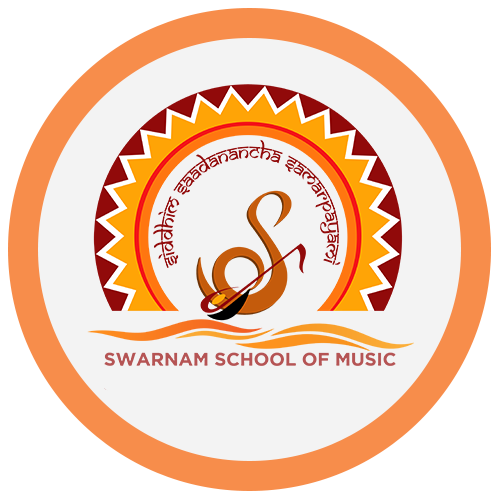A. Our online classes are designed so that each student gets one on one attention. There is no group or even two students singing at a time. When we have network issues, we advise students to use only audio and send in videos to check taalams after class. We have successfully conducted effective, online classes for over two year; even before the pandemic.
A. In the traditional format of Guru-Shishya Parampara, students lived and served their gurus and gurus imparted their singing at all hours of the day and night. It was a way of life. In the modern day and age, this has been reduced to students meeting their gurus for a precious two hours a week! The school derives its inspiration from the Kalakshetra system of teaching the fine arts. In this system, students move between teachers and the try and learn a very specific, niche skill or technique from each teacher. While the whole school follows a single format of teaching, we believe that each of our teachers are experts at a specific and unique skill or technique and we provide the student with the opportunity to learn several techniques rather than the only one that a single guru would impart. Many of the established musicians and artists are those who have been exposed to an array of singers and artists. At the school, we are simply bringing that opportunity on a single platform
A. Carnatic music and Hindustani music largely function on the same concepts. They differ however in the way they are sung. Moving between carnatic and Hindustani is not uncommon. However, most professionals master one of the streams before trying the other. Also, there are several singers trained in carnatic who attempt abhangs and bhajans and fewer Hindustani singers who render carnatic compositions with gamakams.
It is always a good idea to stick to whatever you have learnt. But if you have only spent a few weeks or one or two months in Hindustani music, you can try the carnatic style. In the school, we do have a few students who came in to try carnatic after a few months or years of Hindustani and have been with the school for years now, exploring the nuances of carnatic music.
A. No, language is not an issue. Most compositions in carnatic music are in Telugu, Tamil, Kannada and Sanskrit. However, this is not colloquial and deeply rooted in literature. It takes an effort for even the locals and native Telugu, Tamil and Kannada speakers to try and pronounce and understand the words. So, whether you are Telugu or Bengali, we are all starting at the exact point and no one has an edge or advantage with language.
A. Yes!!! Age is not a bar at the school! We have a special class- “Take Two” specifically for students returning to singing after a gap. You will need to start at the beginning to get back some lung strength and singing stamina, but depending on your progress, the teachers work with you to quickly push you through the basics and get you on your way to the advance lessons.
A. Yes!!! The school and all its teachers believe that everyone can sing! We understand that not all voices are meant to sing. But we also know that not everyone who sings wants to sing on a stage. Some just want to sing for themselves, some for their children, some for their gods! So, you are welcome to try a class with us. We also have special programs for voice coaching and training, that will give a boost to your singing voice.
A. No. We have many female teachers training our male students and male teachers training our female students. We make sure shruti is adjusted to suit the needs of the student. But we do leverage the help of our male/female teachers for specific lessons like melusthaayi and mandrasthaayi exercises.

